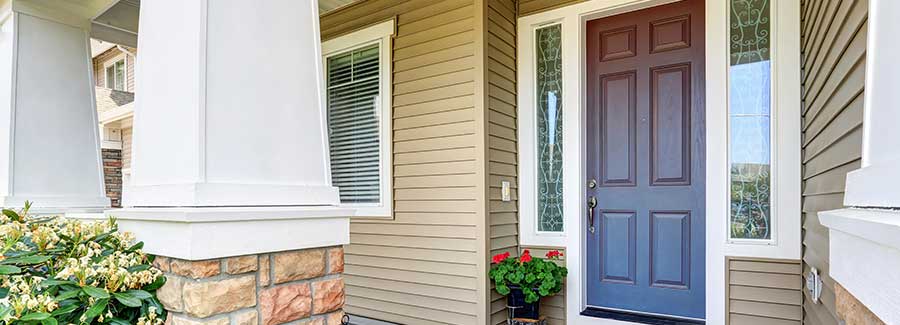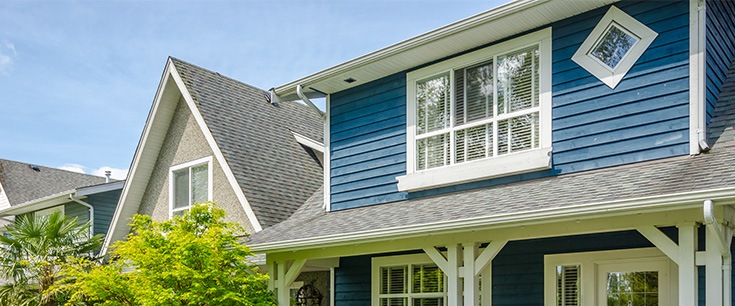Enhance Your Home’s Appeal with the Best French Doors Exterior Style Options
Considering a makeover with French doors exterior? This guide provides you with practical insights about their various styles, materials, and substantial benefits. Understanding how these elements work together can help you choose French doors that not only brighten your home with natural light but also enhance functionality, security, and aesthetic appeal.
Key Takeaways
- French doors enhance a home’s aesthetic and functionality, featuring various materials like wood, fiberglass, vinyl, aluminum, and clad wood, and styles from classic to modern, which should align with the home’s architectural style and functional needs.
- Space considerations dictate the choice between hinged and sliding doors, with hinged doors offering superior ventilation and energy efficiency. In contrast, sliding doors suit limited spaces better without the need for swing room.
- Energy Star certification and advanced glass and insulation technologies like low-E glass and double or triple glazing improve the energy efficiency of French doors, while multipoint locking systems and additional security features enhance home safety.
Understanding French Doors Exterior
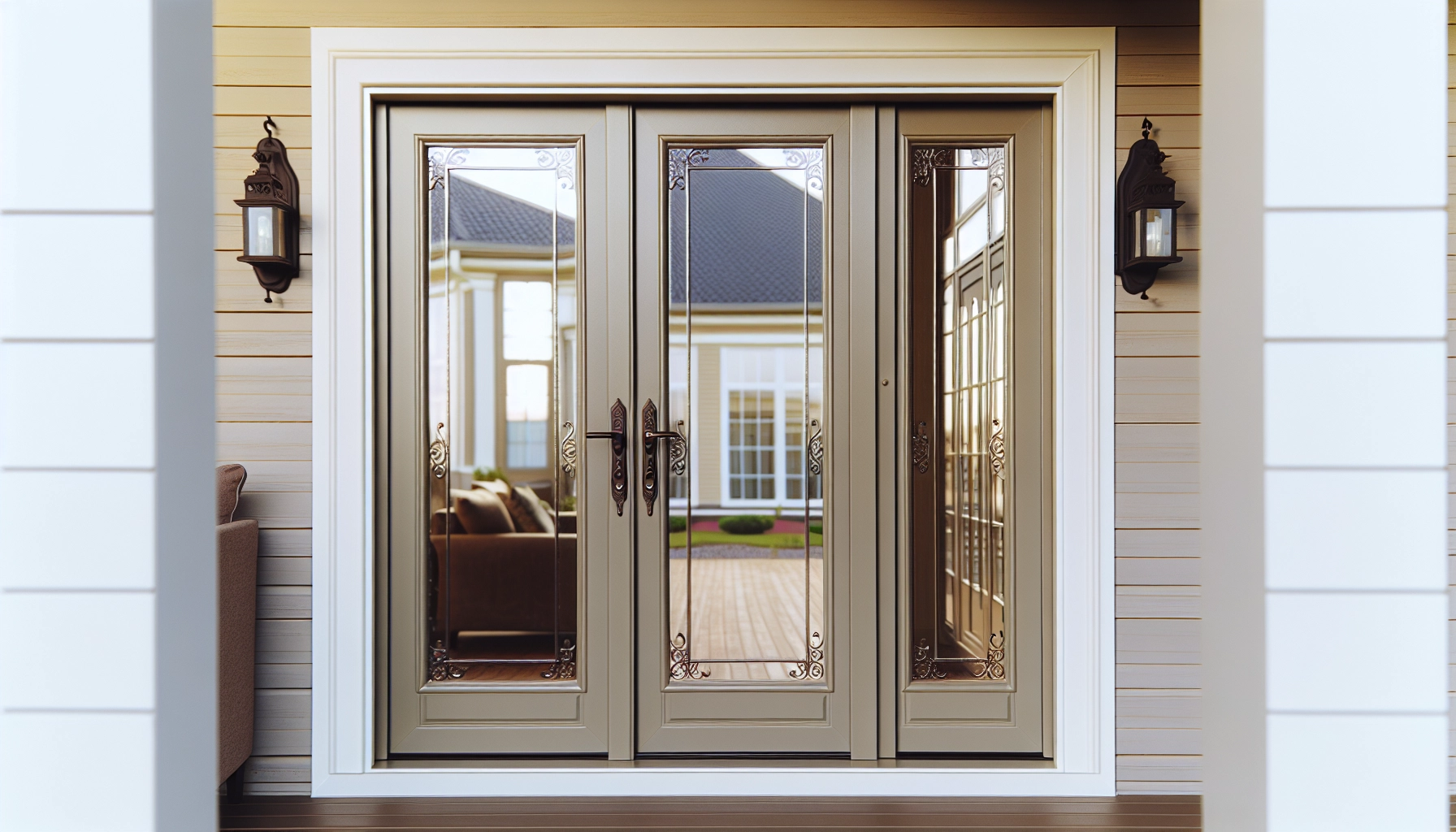
French doors, originally named for their historical beginnings in France, have become a timeless feature in homes around the world. This style of door, dating back hundreds of years, was initially designed to allow more light into rooms before the advent of electricity, enhancing illumination naturally. Known also as hinged patio doors, French doors offer both functionality and aesthetic appeal. Their characteristic two-panel design separates in the middle and can feature various styles such as uninterrupted panes of glass or decorative grids. Some designs incorporate operable dual panels or sliding functionality, providing flexibility in their functionality. These patio doors are perfect for connecting your indoor and outdoor spaces, making them not only a nod to historical elegance but also a practical choice for today’s lifestyles.
Furthermore, French doors can be constructed from a range of materials like wood, fiberglass, vinyl, aluminum, and clad wood, each catering to diverse aesthetic and functional needs.
Material Options
The choice of material for your French doors plays a crucial role in determining their durability, energy efficiency, and aesthetic appeal. Vinyl French doors, for instance, are known for their durability and lightweight design, making them a practical choice. However, they may fall short in terms of energy efficiency or structural robustness compared to other materials.
On the other hand, fiberglass and clad wood offer unique benefits, with the former enhancing the indoor-outdoor flow and the latter providing great ventilation and easy access. Therefore, the material choice should align with your home style and functional requirements.
Benefits of French Doors
French Doors offer numerous benefits, making them an attractive choice for homeowners. Some of the most significant advantages include:
- Enhancement of natural light within the home
- Creation of a luminous and airy ambiance
- Facilitation of indoor-outdoor flow
- Making a dramatic statement with their proportion, symmetry, and glass panes
- Allowing ample light to enter, creating a spacious feel
In addition to these aesthetic advantages, French doors also add great ventilation by allowing fresh air to flow between indoor and outdoor spaces.
Choosing the Perfect French Door Style for Your Home
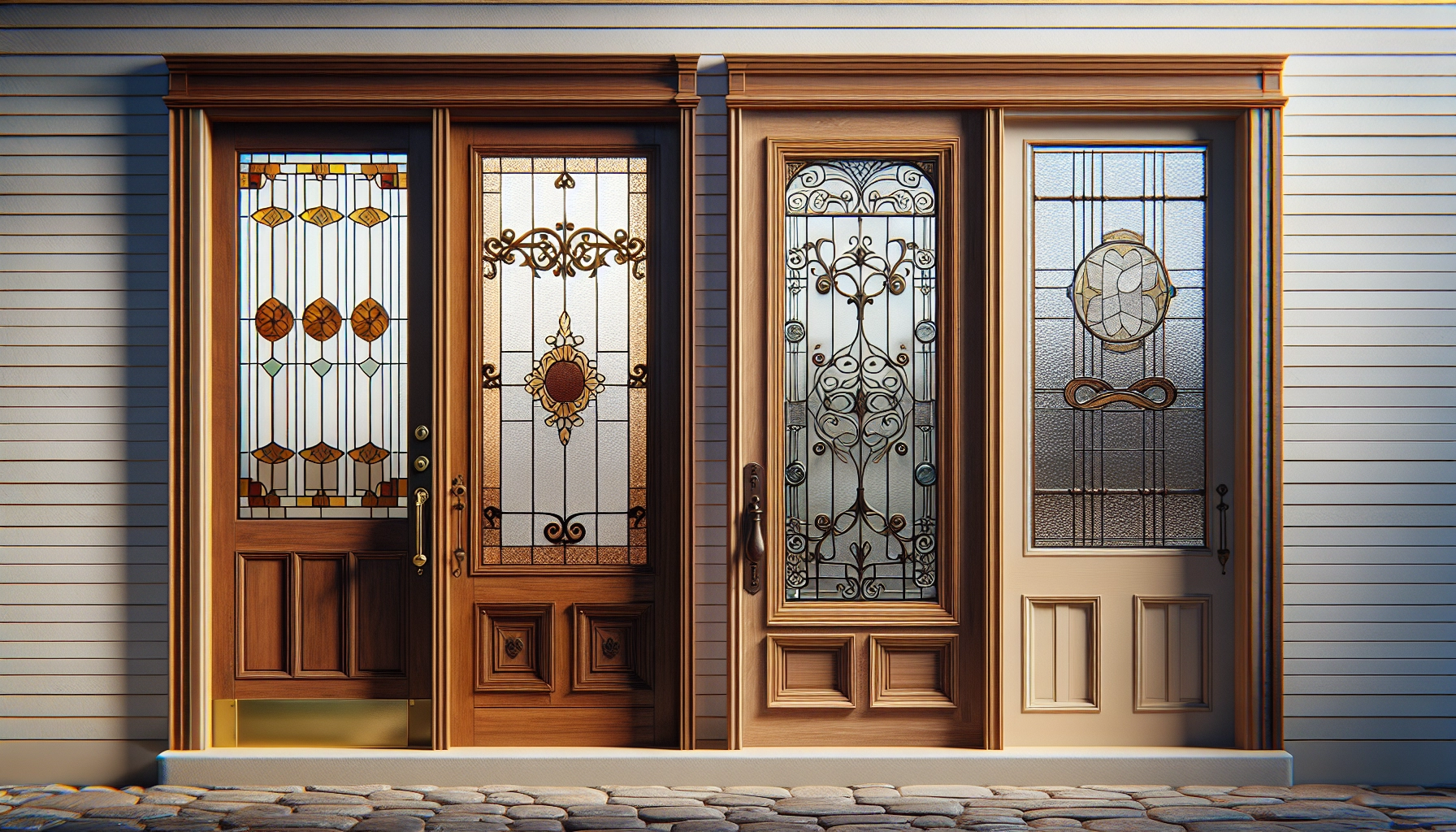
The style of your French doors can significantly impact the visual appeal of your home, serving as an impressive focal point. From classic to modern, the range of door styles is vast, including but not limited to:
- External doors
- Internal doors
- Wood doors
- Glass doors
- Metal doors
- Single-hinged doors
- Double-hinged doors
- Sliding doors
- Bi-fold doors
- By-pass doors
- Pocket system doors
- Sliding doors (single and double)
Therefore, choosing the perfect style for your home depends on your aesthetic preference, architectural style, and functional needs.
Classic Styles
Classic French doors are distinguished by their dual construction, comprising two doors placed alongside each other with a focus on glass design. They provide exceptional views, illuminate the space with sunlight, and exude a timeless elegance, adaptable enough to complement various architectural styles.
Styles such as colonial, Victorian, and craftsman each carry unique design elements that contribute to the overall visual appeal of a home. For instance, colonial-style doors feature a symmetrical design with multiple windows and paired chimneys, while Victorian-style doors are designed with intricate detailing, such as decorative glass panels and ornate moldings.
Modern Styles
For those who prefer a more contemporary aesthetic, modern door styles offer sleek and streamlined designs. Contemporary door design prioritizes energy efficiency and the incorporation of natural light through the use of glass panes. Moreover, the avant-garde prairie-style doors deviate from the traditional colonial grille design, featuring geometric and grid-like grille patterns instead. Popular finishes for such doors include brass, bronze, chrome, and matte black, providing a contemporary aesthetic.
Customizable Features
One of the benefits of French doors is their customizable nature. From grilles to glass options, French doors can be personalized to suit your style and needs. For instance, various grille options are available to match your home’s architectural style, be it wood or vinyl patio doors.
Additionally, a variety of glass options can be incorporated into French doors to achieve a customized appearance, including:
- Annealed glass
- Insulated glass
- Textured glass
- Clear glass
- Tinted glass
- Toughened glass
- Stained glass
- Double or triple-glazing glass
Space Considerations: Hinged vs. Sliding French Doors
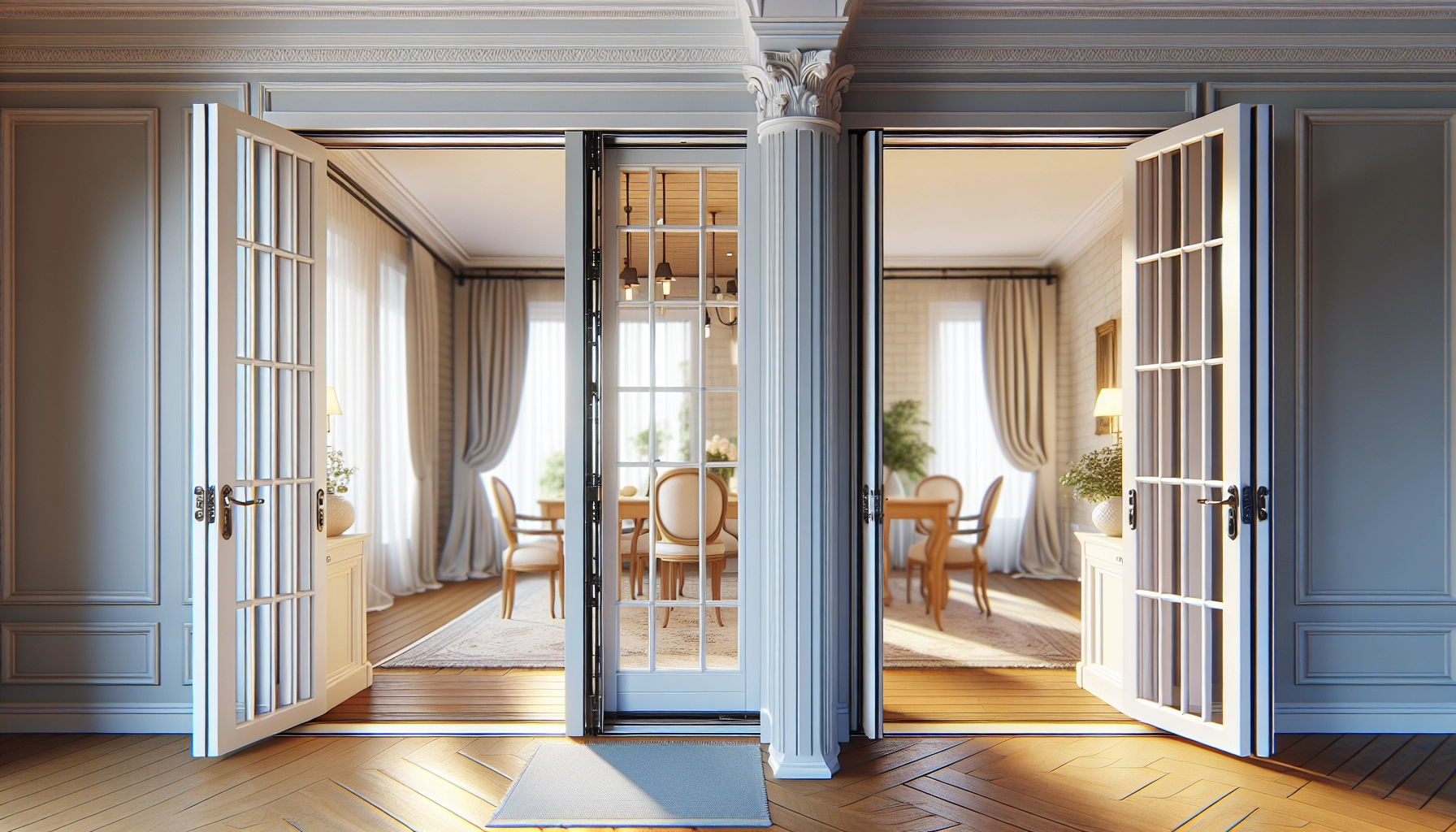
When it comes to choosing between hinged and sliding French doors, space becomes a vital consideration. Hinged doors, usually requiring dimensions between 620mm to 870mm wide, need adequate wall space to accommodate the door swing.
On the other hand, sliding doors require at least a foot or two of surrounding space, making them more suitable for limited spaces as they do not require additional area for door swing.
Hinged French Doors
Hinged doors, also referred to as double doors or simply hinged doors, are specifically crafted to swing open, typically outward or from the bottom as two hinged double doors or with two sashes capable of sliding up and down. They are traditionally admired for their side jamb opening mechanism and sturdy construction, both of which contribute to their enduring appeal.
The principal advantages of hinged doors encompass superb ventilation, effortless access, and enhanced energy efficiency through the reduction of air leakage and drafts.
Sliding French Doors
Sliding doors offer a distinct appeal characterized by a more compact opening when fully extended, making them more suitable for contemporary designs that prioritize efficient use of space over the grandeur of a wide entrance. They require less space than hinged doors due to their lack of need to swing outward when opened.
Their smooth and easy operation is attributed to the simple yet effective mechanism of the panels gliding horizontally along a track.
Enhancing Energy Efficiency with French Doors
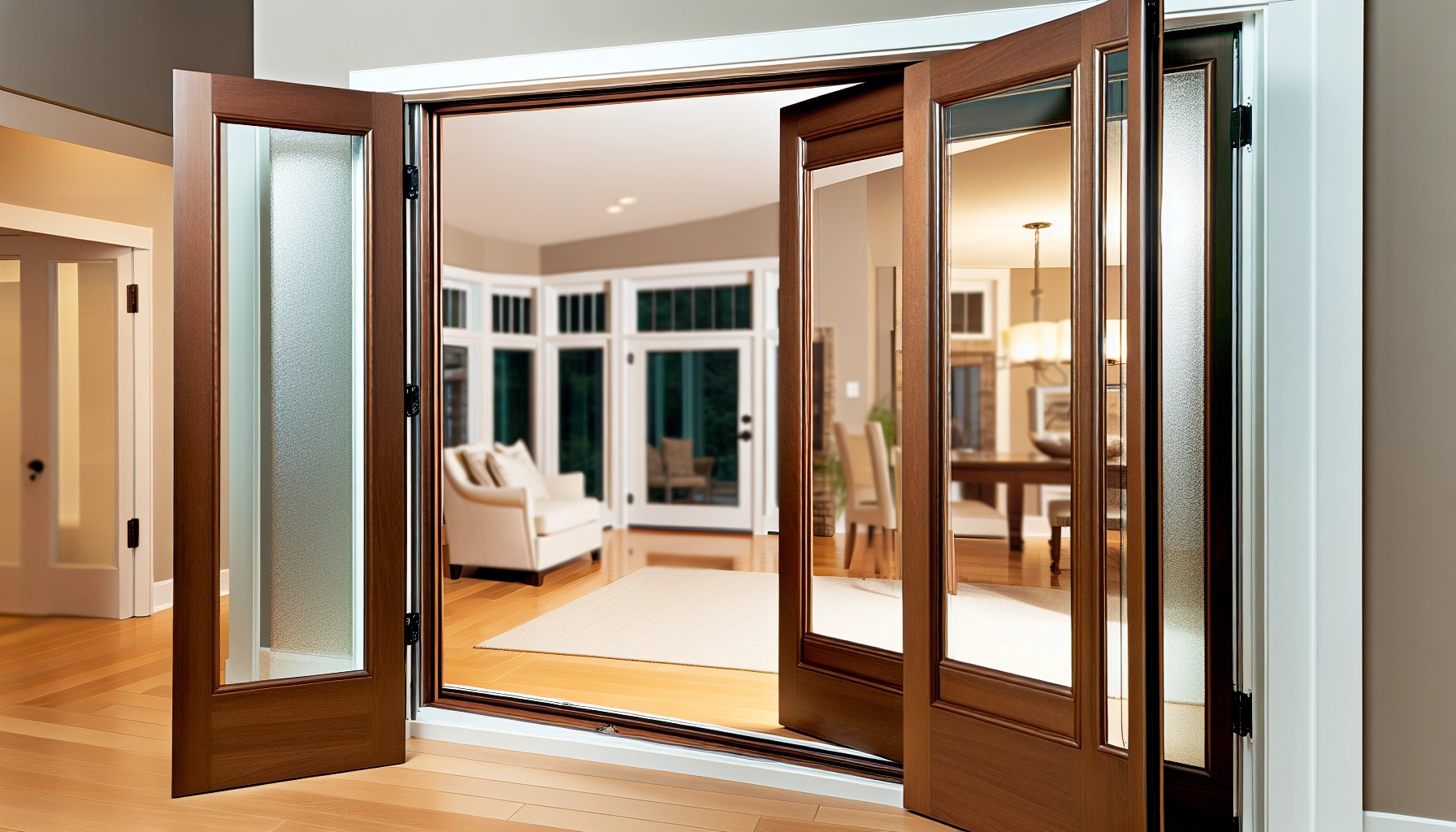
Aside from their aesthetic appeal, French doors also offer benefits in terms of energy efficiency. Energy Star certification guarantees that doors have undergone independent certification and verification to meet or surpass rigorous energy efficiency standards, ultimately enhancing energy efficiency.
Furthermore, advancements in glass and insulation technologies, such as low-emissivity (low-E) glass and double or triple glazing, have made it possible to further improve the thermal performance and energy efficiency of doors.
Energy Star Certification
Energy Star certification for doors signifies that the doors have undergone independent certification and verification to ensure they meet or surpass energy efficiency standards established by Energy Star. In order to be certified, doors must meet performance criteria based on the amount of glass they have (glazing level) and have a U-Factor less than or equal to 0.21.
When professionally installed, Energy Star certified doors have the potential to enhance efficiency and reduce energy expenses.
Glass and Insulation Technologies
One of the technological advancements that contribute to the energy efficiency of doors is the use of low-E coating technology. This involves the application of a microscopically thin coating on the glass, designed to reflect ultraviolet or infrared light, thereby reducing energy loss and enhancing the insulating performance of the doors.
Additionally, energy-efficient doors often incorporate advanced glass options, such as low-E glass types, to enhance their energy efficiency. Furthermore, the use of double or triple pane glasses, which are comprised of multiple layers of glass with sealed airspaces or insulating gas between them, helps decrease heat transfer, improve energy efficiency, and aids in reducing noise.
Security and Locking Systems for French Doors
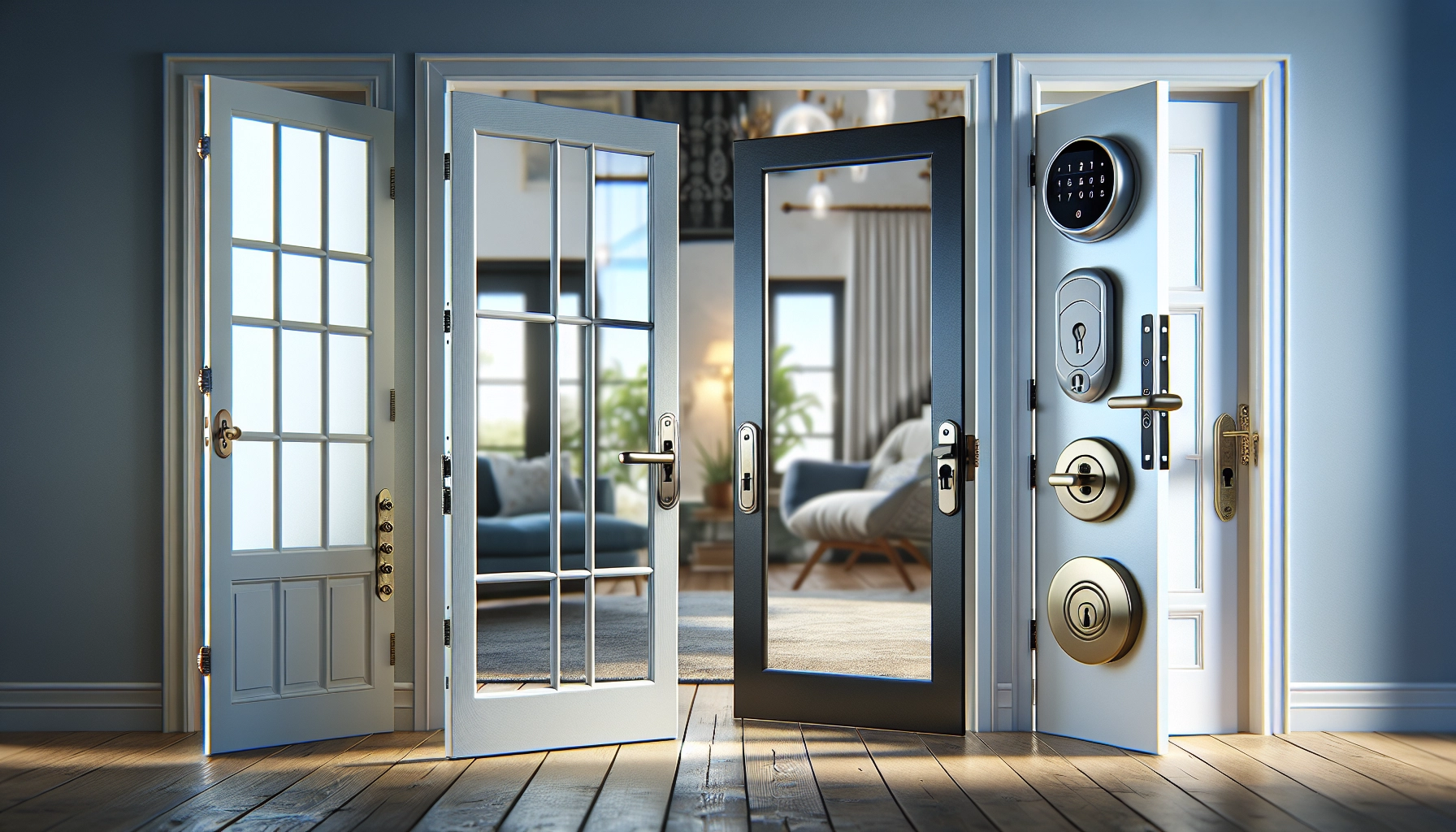
Ensuring your home’s security is paramount, and doors offer various locking systems to ensure safety and peace of mind. A multipoint locking system, for instance, bolsters security by introducing supplementary locking points across the length of the door, spanning from top to bottom, yielding a more robust structure with improved sealing capabilities. In addition to multipoint and three-point locking systems, the safety of doors can be improved through the use of door chains or bars, handle locks, impact-resistant glass, high-quality mortise locks, security film, and specialized screws designed for passive door protection.
Multipoint Locking Systems
Multipoint locking systems offer several advantages:
- Enhance security by reinforcing the door at multiple points
- Help prevent drafts
- Improve energy efficiency
- Increase durability
- Enhance the door’s load-bearing capacity
The operation of a multipoint lock system in doors involves the activation of multiple locking points along the door frame upon closure, thereby enhancing security and deterring forced entry. This system also enhances the energy efficiency of doors by establishing a more secure seal and inhibiting drafts from infiltrating through the gap between the door.
Additional Security Features
In addition to robust locking systems, there are several other security features for doors that can provide an extra layer of protection. Reinforced glass, for instance, improves the security of French doors through the use of materials that are resistant to break-ins, such as security window film, hurricane-rated glass, and strengthened tempered glass, making it more challenging for an intruder to breach the doors.
Secondary locks that can enhance security include:
- Robust deadbolts
- Mortise locks
- Three-point locking systems
- High-quality flush or surface bolts
These locks provide an additional layer of protection.
French Door Installation and Maintenance Tips
Professional installation of French doors ensures proper fitting, weatherproofing, and may come with warranty protection, making it advisable for the best results.
Regular maintenance, on the other hand, is essential for the longevity and optimal performance of your doors. This includes cleaning the glass at least once a month and conducting maintenance on the frames and other components as necessary.
Professional Installation
Having doors professionally installed is crucial to ensure their proper functioning and longevity. Engaging a professional ensures the proper fitting of French doors by addressing the level and squareness of the rough opening before installing the door frame. Furthermore, professionals ensure proper sealing, framing, and fitting of each door to mitigate issues such as drafts or operational difficulties.
They also improve the weatherproofing of French doors by strategically sizing and placing weatherproofing materials to eliminate gaps, and by installing weatherproofing barriers such as foam, rubber, or vinyl along the edges.
Regular Maintenance
Regular maintenance is critical in ensuring the continued functionality and aesthetic appeal of your French doors. It’s advisable to clean the glass of French doors at least once a month and conduct maintenance on the frames and other components as necessary to ensure their optimal functionality and appearance.
Routine evaluations should encompass the identification of physical damage such as scratches, glass cracks, or frame warping, as well as signs of water damage like discoloration, spots, peeling paint, and warped frames. Additionally, it’s recommended to lubricate the hinges on French doors annually using silicone spray lubricants or lithium grease to maintain smooth operation.
Door Accessories and Hardware
French doors can be further personalized with various accessories and hardware options, including:
- Door handles
- Built-in blinds and shades
- Locks
- Lever handles
- Decorative door pulls
- Crosspieces along the glass
These accessories can enhance the functionality and aesthetic appeal of your French doors.
Door Handles and Knobs
Door handles and knobs are crucial elements in the functionality and aesthetics of French doors. They vary in categories, including:
- Non-turning or dummy function handles without a functioning latch or lock
- Passage handles for doors not requiring a lock
- Privacy handles that include locks and are typically used for bathrooms or bedrooms.
Styles such as lever handles and pull handles offer different functionalities and aesthetics to suit your needs.
Built-in Blinds and Shades
Built-in blinds and shades in French doors provide an elegant and integrated method for ensuring privacy. These are fitted between the glass panes, eliminating the necessity for external window coverings, which can be inconvenient and less efficient.
By adjusting the blinds or shades, one can easily manage the level of privacy, controlling light and visibility from outside while maintaining the desired privacy level.
French doors not only enhance the aesthetic appeal of your home but also come with various customization options to suit your specific needs and tastes. French doors can be further personalized with various accessories and hardware options, including built-in blinds and shades. Built-in blinds and shades in French doors provide an elegant and integrated method for ensuring privacy. These are fitted between the glass panes, eliminating the necessity for external window coverings, which can be inconvenient and less efficient. By adjusting the blinds or shades, one can easily manage the level of privacy, controlling light and visibility from outside while maintaining the desired privacy level.
To further enhance your French doors, you have the option to choose from wood French patio doors with optional integrated and between-the-glass blinds and shades. These blinds and shades not only add a layer of design interest but are also designed to be tucked away, thus protected from dust, dirt, and damage. For those who appreciate modern conveniences, pairing our blinds and shades with advanced technology allows for motorized control, enabling you to adjust your settings from virtually anywhere.
Additionally, to complement the functionality of your French doors, consider the variety of screen options available. For in-swing French doors, you can opt for an aluminum screen door that opens outward and is crafted with high-transparency InViewTM screen cloth, designed to maximize visibility and airflow while keeping bugs and debris out. Alternatively, sliding French patio doors can be equipped with an optional Rolscreen retractable screen. This innovative screen retracts smoothly and is stored within the door frame when not in use, thereby eliminating the need for seasonal maintenance. The soft-close retraction feature ensures a gentle and silent operation, enhancing both the usability and aesthetics of your French doors.
By integrating these sophisticated design elements and functional enhancements, you can truly customize your French doors to reflect your personal style while boosting the comfort and efficiency of your home.<
Real-Life French Door Transformation Projects
French doors have the potential to:
- Add stylistic elegance
- Improve functionality and flow
- Elevate the living space
- Enhance the home’s design and overall style
- Invite more light
- Boost the home’s value
- Contribute to energy efficiency
- Have an architectural influence on the home’s appearance.
Real-life transformation projects, such as:
- transforming three French doors to change the look of a house
- sanding and glazing French doors for an update
- adding exterior French doors to bring in more light and character
- transforming French doors into a barn door
- using DIY French doors to replace closet doors
- incorporating French doors in elegant home renovations
Experience the transformative power of new French doors in your home, enhancing the look and feel of any room.
From classic to modern, the range of door styles is vast, including but not limited to: External doors, Internal doors, Wood doors, Glass doors, Metal doors, Single-hinged doors, Double-hinged doors, Sliding doors, Bi-fold doors, By-pass doors, Pocket system doors, Sliding doors (single and double). Therefore, choosing the perfect style for your home depends on your aesthetic preference, architectural style, and functional needs.
Delving deeper into the specific category of French doors, we find several distinct types tailored to various architectural and personal preferences. The Single-Hinged French Door, ideal for rooms with limited wall space, comes in both in-swing and out-swing models. The in-swing doors open into the room, enhancing interior design, while out-swing doors save interior space, opening towards the exterior. These doors can be personalized with a selection of beautiful colors, including custom options, making them suitable for settings like kitchens and bedrooms.
The Double-Hinged French Door features two panels that part in the middle. Depending on the design, both panels could be operable, or one could be fixed with the other operable. These doors can also be either in-swing or out-swing and can be customized with various grille styles or between-the-glass blinds, seamlessly blending the indoors with the outdoor environment.
Lastly, the Sliding French Door, which includes four-panel and multi-slide patio doors that part in the middle, represents a modern twist on traditional French doors. The four-panel variety typically features three operable panels that stack over a fourth inoperable one, while the multi-slide doors have all panels operable, disappearing into the wall with a pocket installation or stacking at the panel’s end with a standard installation. These designs are particularly space-efficient as they slide along a track, and offer a variety of hardware styles to either enhance a modern look or complement a more traditional aesthetic.
Understanding these specifics can significantly aid in selecting the right French door type, ensuring it not only meets functional requirements but also contributes elegantly to the home’s overall style.
Summary
French doors are not merely a functional component of a home; they are a transformative element that enhances aesthetics, improves functionality, and offers numerous benefits. From their ability to increase natural light and enhance indoor-outdoor flow, to their energy efficiency and security features, French doors provide numerous benefits that make them an attractive choice for homeowners. Available door designs offer a vast and diverse range, ensuring a perfect fit for every home, whether you prefer a classic or modern style. With regular maintenance and professional installation, French doors can continue to add value and beauty to your home for years to come.
Frequently Asked Questions
What is cheaper patio doors or French doors?
Sliding doors are generally cheaper than French doors; however, they may offer less architectural appeal. They are a more cost-effective option and can provide a modern aesthetic with ample natural light. Professional installation is crucial for both options.
What is the average cost of a French door?
The average cost of a door installation ranges from $1,599 to $7,000, depending on the type of door and installation services. The price can vary based on the material, customization, and labor costs.
What is the difference between double doors and French doors?
The main difference between double doors and French doors is the material used for crafting. Double doors are often made of solid wood, while French doors incorporate panes of glass to allow more natural light into the space.
What are the fundamental characteristics of exterior French doors?
Exterior doors consist of hinged patio doors with two panels that can feature uninterrupted glass or decorative grids, and they may include operable or sliding functionality. These characteristics make them versatile and stylish options for exterior entrances.
How does the choice of material affect the functionality of French doors?
The choice of material significantly impacts the durability, energy efficiency, and aesthetic appeal of doors. Different materials like vinyl, fiberglass, and clad wood offer various benefits that affect the functionality of the doors.
How can sidelights and transoms enhance the design and functionality of French patio doors?
Incorporating sidelights and transoms with French patio doors can dramatically enhance both the aesthetic appeal and the functionality of your home’s entryway. Sidelights, which are slender, vertical windows positioned alongside the doors, allow natural light to pour into the space, making it appear brighter and more welcoming. Additionally, these panels offer a glimpse of the outdoors without compromising privacy. Transoms, which are horizontal windows placed above the door frame, further maximize the entry of natural light and can add an architectural element that visually expands the vertical space. Together, sidelights and transoms not only increase the infusion of natural light into your home but also elevate the architectural design, giving your French patio doors a more pronounced, elegant appearance.
What materials are commonly used for energy-efficient French doors?
Energy-efficient French doors can be constructed from a variety of materials, each offering unique benefits and characteristics suitable for different home styles and climates. Common materials used for these doors include wood, fiberglass, and vinyl.
Wood:
Wood is a popular choice for French doors due to its natural insulation properties and versatility in design. It can be tailored to meet specific aesthetic preferences, fitting both traditional and contemporary home designs. Wood doors can be found in numerous product lines, reflecting their adaptability and customization possibilities.
Fiberglass:
Known for its robustness, fiberglass is an excellent material for French doors, especially in areas with harsh climates. Fiberglass doors can withstand significant wear and tear, making them a practical option for patio entries. These doors are also available in various contemporary colors and styles, enhancing the visual appeal while maintaining energy efficiency.
Vinyl:
A strong, durable, and cost-effective option, vinyl French doors offer excellent energy efficiency. These doors typically feature enhancements such as dual-color frames and multiple grille designs, and they are resistant to weathering and maintenance-free. Vinyl doors are available in both sliding and hinged configurations, making them a versatile option for many homes. In summary, wood, fiberglass, and vinyl are the predominant materials used for crafting energy-efficient French doors, each providing distinct advantages and features suited for different environmental conditions and stylistic preferences.
What are French doors and their origins?
French doors, originally developed in France, are a specific style of patio door distinguished by their side hinges which allow them to swing open and closed. Often referred to as hinged patio doors, they are well-loved for their ability to let in plentiful natural light and often feature elegant grilles, enhancing their aesthetic appeal. This type of door is typically installed in rooms that are already rich in windows, adding to the architectural beauty and brightness of the space.

